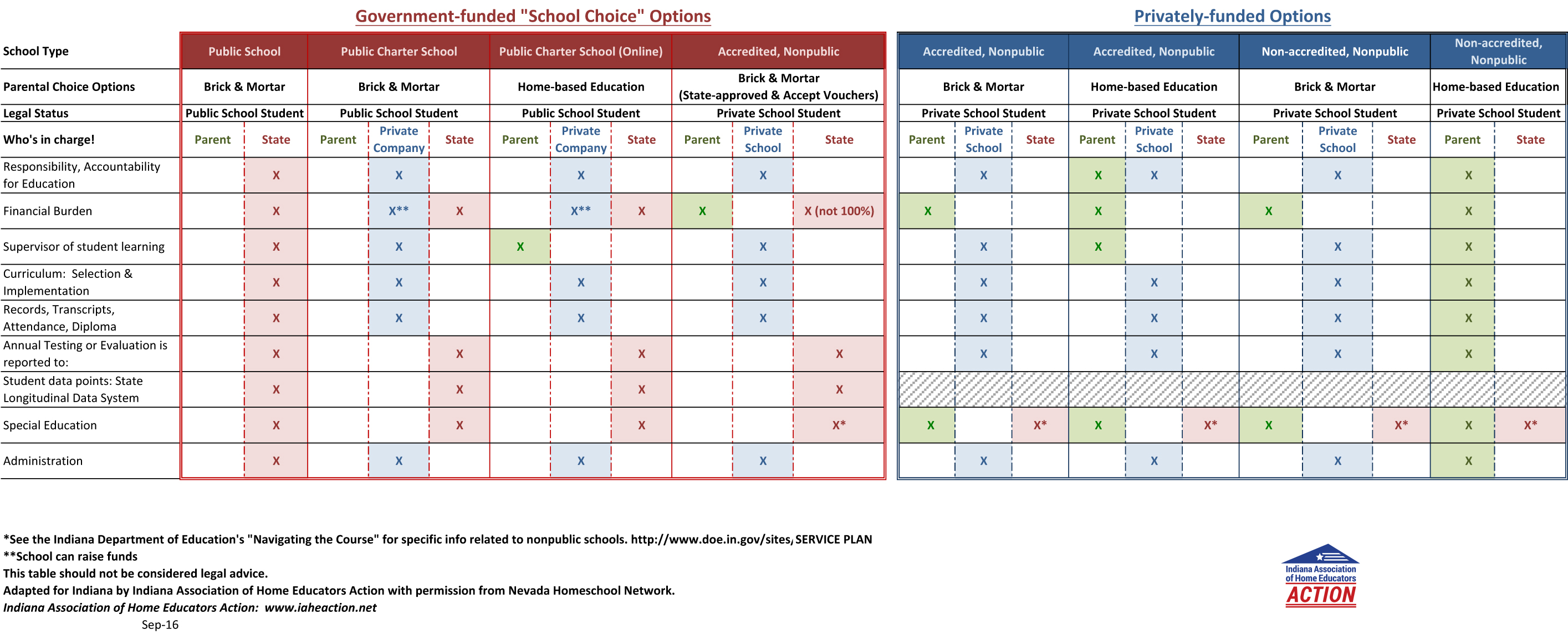Who’s in charge of your child’s education? It depends on the type of school in which your child is enrolled. The type of school determines the amount of parental involvement and oversight. It is important to remember the Common Schools (public schools) were formed by the States to provide an education for those families who chose not to educate their child privately. Originally, they were not compulsory, universal, or free.* “In Abington v. Schempp, the U.S. Supreme Court confirmed that education historically was privately-controlled and public schooling, in the modern sense, was non-existent.”**
Funding and control are key issues in the chart. On the left is the public school in which the parent gives full control to the State. The State funds the education and has maximum control. On the right is the home-based, non-accredited, nonpublic school which is how home schools are defined in Indiana Code. Home educators have full control of their child’s education. They also fund it. Some who are enrolled in a home-based on-line public school such as Connections Academy or Hoosier Academy mistakenly believe their school is classified the same way as a home school. As you can see, those schools are classified in the third category under government-funded varieties and not in the eighth category with home education under privately-funded varieties. We hope this helps clarify the differences in the various types of schools and their funding.

Click on the chart to enlarge it.
*The history of Common Schools in the US is from “Education and the State: A Study in Political Economy” by E. G. West, Liberty Fund, 1994, Third Edition, Revised and Expanded, Chapter 17.
**”The Right to Home School: A Guide to the Law on Parents’ Rights in Education” by Christopher J. Klicka, Carolina Academic Press, 1998, Second Edition, page 29.
